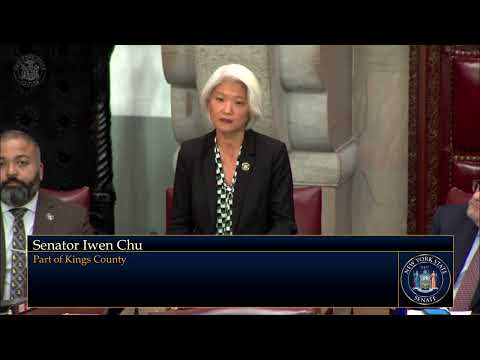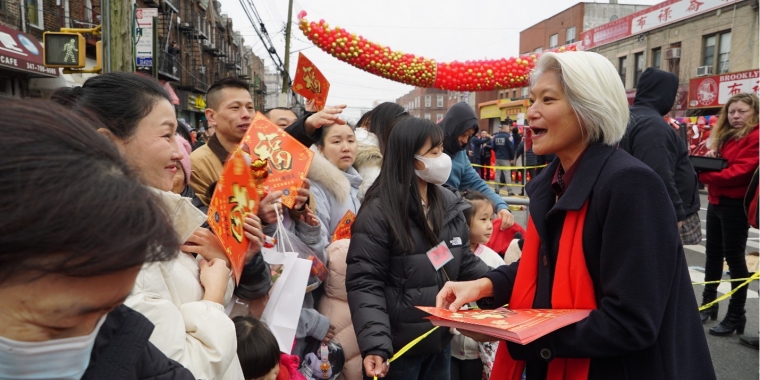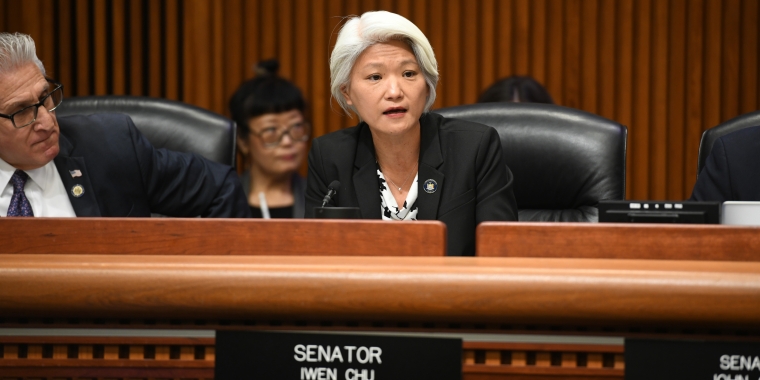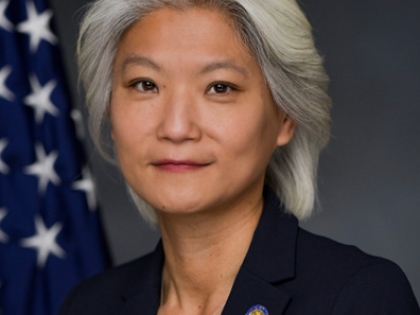
Sunset Park’s ‘Dragon’s Den’ unveils mural as elected officials demand EMT pay parity
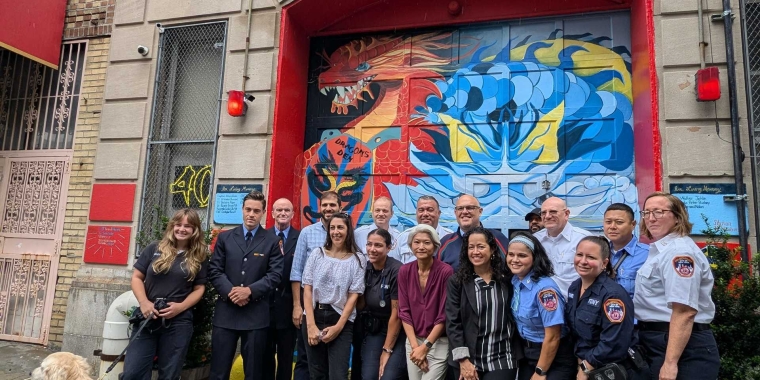
Firefighters and elected officials gathered at EMS Station 40 in Sunset Park, known as the “Dragon’s Den,” on Aug. 8 for the unveiling of the station’s new mural, featuring two bold dragons symbolizing the community the first responders serve.
Typically, the apparatus doors of New York City station houses display the company’s logo and patch. However, FDNY EMS Lieutenant Anthony Almojera told Brooklyn Paper that his station wanted something different — a true work of art.
“We wanted to have something unique that’s not found in any part of the fire department,” Almojera explained.
Almojera shared his vision with Brooklyn artist Linda Serrone, with two key requirements: that the mural reflects Sunset Park and the surrounding neighborhoods — the largest Asian-American community in New York City — and that the dragon’s mouth be painted over the door where the first responders enter “the dragon’s den.”
Artist Linda Serrone, who approached the mural as if it were a painting, told Brooklyn Paper that the piece pays homage to the neighborhood and memorializes the EMTs who lost their lives in the line of duty — the most challenging aspect, according to Serrone.
“These guys literally do the jobs of a police officer, a fireman, and a paramedic, which is their main thing,” Serrone said. “I hope that [the painting] gives them energy, and they know I’m a mad supporter.”
Almojera picked the unveiling date of Aug. 8 on purpose, as the number eight symbolizes long life and good fortune in Asian culture.
“So now we have double eight in the Year of the Dragon. So hopefully, that’ll bring us all good fortune in EMS because we could use it,” he said.
For years, the FDNY EMS unions, representing approximately 4,000 EMTs and paramedics — 60% of whom are minorities and 40% women — have been fighting for pay parity with FDNY firefighters and police officers. A rookie EMT’s salary starts at $39,386, while a rookie firefighter begins at $45,196. After five years, FDNY EMS workers often reach a top salary of $59,000, compared to around $110,000 for firefighters.
In 2023, the city’s “street doctors” responded to 1,619,813 emergency calls, averaging about 4,400 calls daily. Almojera, who also serves as vice president of the Uniformed EMS Officers Union FDNY Local 3621, noted that FDNY EMTs are burnt out and leaving the department in droves.
“According to the fire department, we’re losing 10 to 15 people a week,” Almojera said. “So there’s a lot of issues in EMS. Roughly 75% of my workforce has less than five years experience. Since the beginning of the [COVID-19] pandemic, we’ve had 12 members [die by] suicide.”
Many EMTs work a second and third job to make ends meet and live outside the city because they can’t afford the staggering rents. Despite Mayor Eric Adams’ promise of pay parity for the FDNY EMS workforce, current contract negotiations aren’t “going well,” Almojera said.
“We go to all types of crazy things, shooting, stabbings, fires, building collapses. In Rockaway, two people were swimming last night or two nights ago, and they almost drowned, and EMS ran onto the beach,” Almojera said. “You have all these things that we go to, and when you call 911, you get a choice of three. But for some reason, the city has decided that one of them is unequal.”
“According to the fire department, we’re losing 10 to 15 people a week,” Almojera said. “So there’s a lot of issues in EMS. Roughly 75% of my workforce has less than five years experience. Since the beginning of the [COVID-19] pandemic, we’ve had 12 members [die by] suicide.”
Many EMTs work a second and third job to make ends meet and live outside the city because they can’t afford the staggering rents. Despite Mayor Eric Adams’ promise of pay parity for the FDNY EMS workforce, current contract negotiations aren’t “going well,” Almojera said.
“We go to all types of crazy things, shooting, stabbings, fires, building collapses. In Rockaway, two people were swimming last night or two nights ago, and they almost drowned, and EMS ran onto the beach,” Almojera said. “You have all these things that we go to, and when you call 911, you get a choice of three. But for some reason, the city has decided that one of them is unequal.”
Danielle Gustafson, executive director of the EMS FDNY Help Fund, told Brooklyn Paper that EMTs and paramedics began the fund by contributing $2 from their biweekly paychecks. The fund collaborates with various partners and will host its second annual gala on Oct. 1 at the Classic Car Club.
Gustafson would like to put herself “out of a job.”
“I don’t think this fund should exist. In a perfect world, you wouldn’t need a fund like this,” Gustafson said. “But the world isn’t perfect, and so here I am.”
The elected officials in the room also addressed the pay parity. Those in attendance included State Senators Iwen Chu and Andrew Gournades and City Council Members Justin Brannan and Alexa Avilés.
Avilés called the station house’s new mural “beautiful.”
“It integrates both the community that we’re in and the culture and the beauty,” she said. “It just has so much meaning and relevance.”
Avilés called the EMTs and paramedics the “heart of New York City,” who save lives every day but don’t receive the pay parity and benefits uniformed personnel deserve.
“They’re not even recognized as such,” Avilés said. “This wrong needs to get corrected immediately, and New York City City has the resources to do it. It needs the political will and commitment.”
Chu couldn’t wait to see the mural.
“You guys are here, day in, day out, on the street with our community, with our residents to make sure they’re safe, they are healthy, and they can go back to their homes,” she said.
Brannan called the pay disparity a “stain on the city” and promised to “fight hard” to ensure that EMTs and paramedics would receive their due. He then called on the mayor to keep his promise to prioritize pay parity.
“Now’s the time to get this done,” Brannan urged. “Because God forbid, I have to call 911, they [ask], ‘You need police, fire, or medical?’ all in the same breath, all equal, except when payday comes, we see who’s equal and who’s not equal, and it’s wrong. It’s pitting first responders against each other.”
Gournades recalled the first time he visited Station 40, and staff showed him a paycheck of $743 for two weeks of work. “Who can afford to live anywhere in this country on that type of money, let alone New York City?” he asked.
The mayor’s office did not respond to Brooklyn Paper’s inquiry about EMT pay parity.
